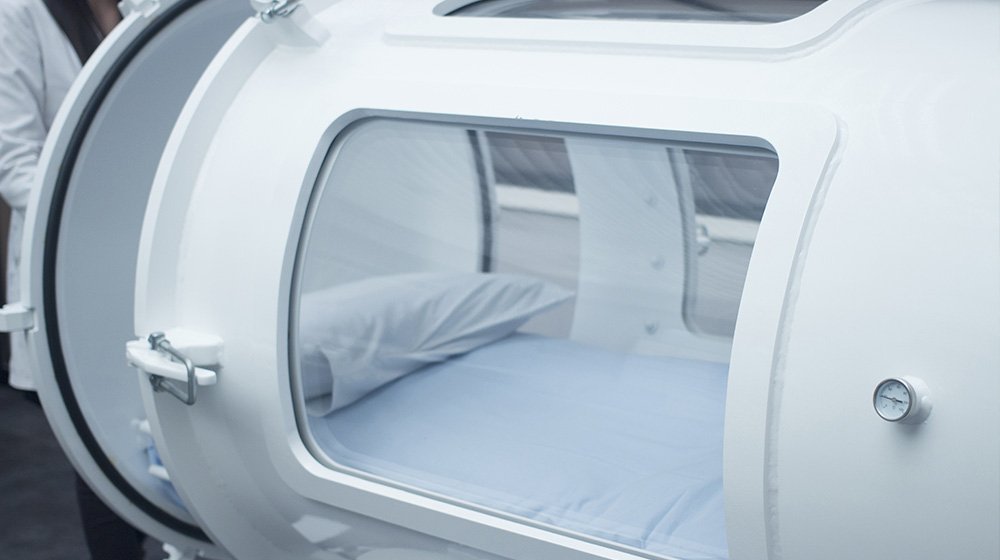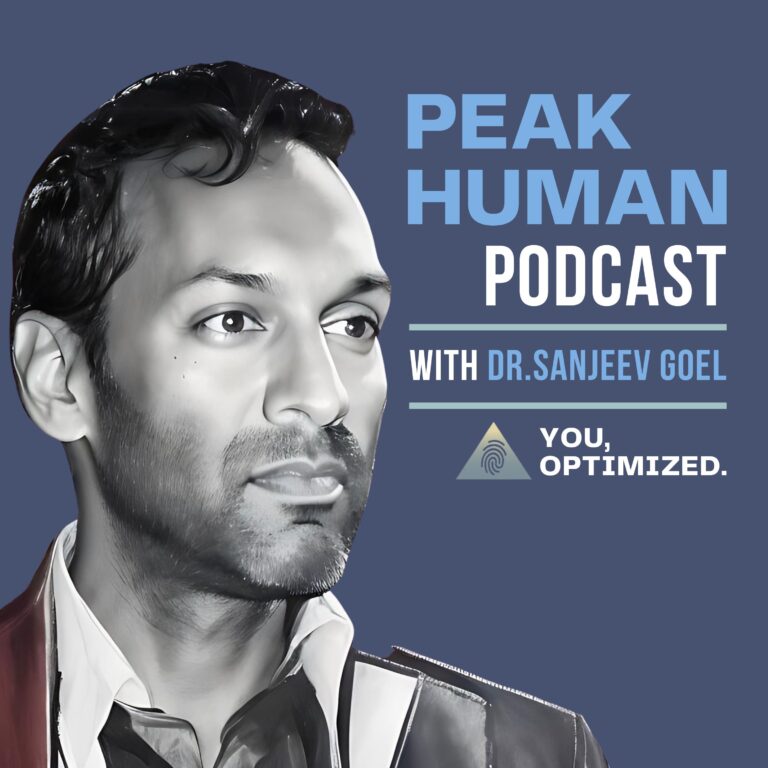Overview
Time is an irreversible process. No matter what we do or how we advance in medical science, the power of time has long been a massive hindrance that restrains us from reaching increased lifespan and longevity. But what if it could be different?
Recently, the scientific community’s interest in intervening with time has bloomed, potentially expanding human health and assisting research in various pathologies. As a result, human hibernation becomes a new target.
This article reviews the emerging concept of human hibernation as a possible approach to longevity. It explains how humans could use a strategy that was once beyond the bounds of possibility to extend life expectancy.
RELATED: The Use of ‘Cold’ Tech to Improve Your Deep Sleep
Human Hibernation Can Open a New Door to Longevity
Understanding Hibernation
A State of Downregulated Physiological Processes
Hibernation is a state of prolonged downregulation of all the physiological processes inside the body of an animal.
This state is characterized by reduced body temperature, breathing, heart rate, and metabolism, collectively known as “torpor,” to the point they only function enough to sustain the survival of the organs. Hibernation most commonly happens during winter months in smaller animals like rodents or birds and some bigger animals like bears.
Surprisingly, contrary to general belief, hibernation is not a continuous process but consists of multiple interspersed bouts of arousal and lethargy, with torpor lasting days or weeks. A typical hibernator would emerge from its hibernation several times to restore its physiological activity before it resumes the hibernation process.

Is Hibernation a Long Sleep or Something More?
So is hibernation simply another term for prolonged sleep, or is it something beyond the normal resting process that occurs in all animals?
First, before we regard hibernation as identical to sleep, we need to determine how much hibernation can change the physiological processes inside an animal’s body.
Bears, for example, may hibernate for as much as seven months a year in the colder parts of Alaska, which lowers their average body temperature from 38°C to around 30°C. This body temperature reduction decreases the energy requirement needed to generate heat and compensates for heat loss during hibernation.
Still, heat reduction is not the most extreme change in hibernating bears. This animal’s metabolic rates are comparable to those of other, smaller, and better-recognized hibernators. For example, their heart rate can drop to around 4 bpm, allowing them to breathe only 1-2 times every 60 seconds. At the same time, oxygen consumption can go down to 25% of its average level.
Can a typical night’s sleep allow animals to alter their body temperature and metabolism like that? Absolutely no. Even during deep sleep, the heart rate of a sleeping bear is around 33 bpm. It is because organs and the associated processes remain remarkably active to facilitate normal physical development.
Why Would Hibernation Be Important to Humans?
So now we understand hibernation and how it is different from normal sleep. But how would hibernation matter to humans? Can we make use of this process?
Conserve Energy by Slowing Metabolism
The most noticeable importance of hibernation in humans would be energy conservation. Although saving energy is not necessary for humans as food sources are now generally available, this can be useful in some unfriendly conditions.
Metabolism is the rate by which the body burns energy from food for growth and functioning. So the more the metabolic rate is reduced, the more energy is conserved during hibernation. For example, suppose we could lower our metabolism like the bears by up to 75%; we could survive food scarcity by up to 4 days by consuming enough food only for one day.
Reduced body temperature would also help humans survive longer in harsh conditions. As endothermic organisms, humans depend more on the ability to generate heat internally rather than on the environmental temperature. This intrinsic heat generation requires energy converted from food. So less heat generated means less energy from food needed.
Manipulate the Body for Medical Purposes
Hibernation also offers humans the unprecedented possibility of manipulating the body so that we can correct detrimental behaviors, like addiction, or get rid of the health conditions related to the brain, heart, and body composition.
Let’s regard human hibernation as a long-lasting and superior anesthetic.
Do anesthetics decrease the heart rate? Yes, adults under general anesthesia typically have heart rates between 40-60 bpm, which is lower than the awake rate of 60-100 bpm at rest. But can anesthetics lower the body temperature and other metabolic parameters to the extreme minimum? Unfortunately, the answer is no, or at least not yet.
Hibernation, if deployed by humans as a replacement for traditional anesthetics, would allow patients in urgent need of organ transplantation or those with a terminal illness to have more time to survive while waiting for treatment. This would open a new door to various medical applications in lifespan and longevity.
RELATED: Can Spermidine Help Slow Down Aging?
Can Humans Hibernate?
Karolina Olsson: Waking Up Young After 32 Years
Although hibernation in humans is still far-fetched, this has happened before.
Karolina Olsson, who lived from 1861 to 1950 in Sweden, was believed to be the only human who could live through 32 years of hibernation (1876-1908) and then awoke without residual symptoms.
But Olsson’s hibernation was not entirely natural, as before she went down into her year-long “sleep,” she had suffered a head wound and a toothache, none of which were adequately treated by a medical professional.
Despite numerous medical interventions, including electroconvulsive therapy, while remaining unconscious in the following years, Olsson only awoke 32 years and 42 days after falling asleep.
So how was Karolina Olsson’s fitness state after she emerged from hibernation?
She was frail and pale and displayed sensitivity to light in the first few days after awakening. She also had trouble speaking and recognizing people in her family. Yet, she was still able to read and write, and she was able to recall everything she had learned. Surprisingly, she was described as looking no older than 25 at 46.
Facilitating Human Hibernation Through Medicine
Still, researchers want to know more about not how humans can hibernate spontaneously but how to design a synthetic medicine that can safely induce hibernation.
According to research, although the mechanism of reduced metabolism during hibernation remains largely unknown, the central nervous system (CNS) is the crucial regulator of torpor. So human hibernation is possible if we can control the CNS and activate torpor via a drug.
The research found that torpor is mediated within the CNS via activation of the adenosine receptors in the brain of squirrels using an agonist called CHA. However, CHA only works seasonally, as it does not induce torpor during the summer or out-of-hibernation season.

As observed in the figure above, oxygen consumption and core body temperature of the animal subjects drop significantly within the first 12 hours of CHA administration. Notably, oxygen consumption plummets to near zero during mid- and early-hibernation season. At the same time, body temperature goes down to over 5°C, far lower than the original 38°C.
What Could Be the Implications of Human Hibernation?
Facilitate Prolonged Surgeries
Human hibernation would allow surgeons to replace traditional anesthetics with a superior approach to assisting surgical operations.
The concept of suspended animation, also known as emergency preservation and resuscitation (EPR), is now being tested by scientists at the University of Maryland.
EPR can assist patients whose hearts have stopped due to cardiac arrest. It lowers their body temperature to 10°C by replacing their blood with ice-cold saline, which reduces their need for oxygen and gives the surgical team up to 2 hours of delayed resuscitation. The body is then warmed up, and the heart is restarted after the procedure.
Manage Weight Loss and Obesity
Did you know that black bears lose around 15-27% of their body mass after hibernation by burning their fat for energy?
More surprising is that just before hibernation, most are obese and insulin resistant as they consume excess food. Although hibernation is a minimally energy-consuming process, it can shed off a considerable amount of body weight given its duration of up to weeks and months.
But is there any other unique ability in these animals that we can translate to humans to help us lose weight and control weight-related diseases like obesity? Recognizing this feature, scientists at the University of Utah have conducted a study on hibernation and obesity to see the effects of long-lasting “sleep” on body weight.
The study found that hibernators have a unique capacity to regulate their metabolism, which may help treat obesity and other metabolic disorders.
The studied hibernators were all found to have a collection of short DNA segments known as “parallel accelerated regions,” which are close to genes associated with obesity. As a result, these animals can allow the genes linked to obesity to “turn off.” Researchers are working to identify that “switch” in the human genome to regulate obesity by combining data from humans and hibernating animals.

Protect the Brain From Diseases
Another species that hibernates, Arctic ground squirrels, may hold the key to understanding and preventing Alzheimer’s disease in humans.
The brains of the Arctic ground squirrels experience extreme stress while hibernating: neurons shrink, and their connections weaken. But they also exhibit extraordinary plasticity. Thanks to this high level of plasticity, their neurons recover during bouts of arousal, blooming to even higher levels than usual, then settling down to normal.
The protein tau, which accumulates in the brains of hibernating squirrels and those with Alzheimer’s disease, plays a role in this neuronal recovery. When the squirrels awake, they can remove tau from their brains. We may learn more about Alzheimer’s and other disorders if researchers identify the underlying mechanism.
Maintain Youthfulness
Finally, what if we could stop our biological clock, add more years to our lifespan, and stay youthful for as long as we go down into hibernation?
Although it sounds like science fiction, this has happened before, as Karolina Olsson, who is mentioned earlier, woke up from her 32-year hibernation and still looked not so much different from the last time she fell asleep.
RELATED: 4 Genius Ways to Biohacking Your Brain
Bottom Line: When Will Human Hibernation Be a Reality?
While it’s still unclear if humans can hibernate for extended periods without danger, studies exploring potential pathways may offer the diverse perspectives required for this to happen. Recent scientific discoveries in pharmacological and genetic tools have already demonstrated their remarkable ability to induce or control sleep.
However, to thoroughly comprehend how we can intentionally and safely induce human hibernation, we must analyze essential areas in the brain and identify the crucial chemical pathways that control our sleep-related activities.
References
Jinka, T. et al. (2011). Season Primes the Brain in an Arctic Hibernator to Facilitate Entrance into Torpor Mediated by Adenosine A1 Receptors. Journal of Neuroscience.
Geiser, F. (2013). Hibernation. Current Biology.
Ferris, E., Gregg, C. (2019). Parallel Accelerated Evolution in Distant Hibernators Reveals Candidate Cis Elements and Genetic Circuits Regulating Mammalian Obesity. Cell Reports.
Tisherman, S. (2021). Emergency Preservation and Resuscitation for Cardiac Arrest From Trauma. The New York Academy of Sciences.
Grigg, G. et al. Not Just Sleep: All About Hibernation. Australian Academy of Science
If you have questions about human hibernation or any health problems discussed here, connect with us and learn more.
At Peak Human, our team of healthcare professionals is dedicated to helping you reach your ‘peak’ health with a custom whole-person approach. Using the most cutting-edge, science-backed biohacking and aesthetic tools, technologies, and treatments available today, we help you achieve the highest physical/cognitive performance state, leading to an improved overall quality of life.
For questions or to book an appointment, don’t hesitate to contact us. Get personalized support and insight from expert physicians.
UP NEXT:
- How Does Cryotherapy Work?
- Understanding the Hallmarks of Aging
- What Are the Side Effects of Prostate Artery Embolization (PAE)






